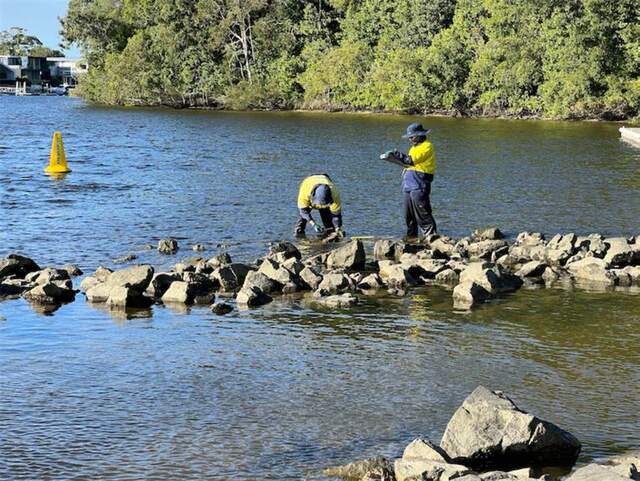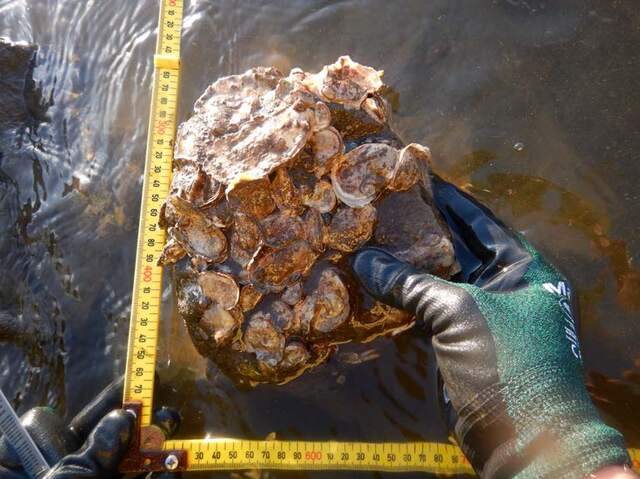The second year of monitoring Noosa’s Huon Mundy show the reefs are performing above expectations, according to the Nature Conservancy Australia (TNC).
Monitoring of the reefs was recently completed by independent ecological consultants, Ecological Service Professionals, who confirmed that despite lengthy summer rains and high river turbidity, the reefs continue to improve consistently, faring even better than control sites.
TNC’s Seascapes coordinator for Queensland, Craig Bohm, said that since the laying of the rocky foundations in the spring of 2022, Noosa’s Huon Mundy Reefs have been thriving faster than expected.
“We are very excited that these early monitoring results are really promising,” Mr Bohm said.
“It is still early days in the life of the reefs, but already they are showing high oyster densities, regular recruitment of young oyster ‘spat’ and an increase in their median size. At Goat Island, the reefs are even providing an erosion reduction benefit, which is really good news.
“The report confirmed that the density of oysters at all four restoration sites (Tewantin, Goat Island, Noosa Sound East and Noosa Sound West) is above 550 oysters per square metre, which is more than double the target of 200 oysters per square metre required for healthy reef development.
“The report also stated that since September 2023, the median size of oysters increased from 21mm to 24mm and that there were already oysters growing up the sides of rocky foundations and the reefs are being colonised by mangroves and macroalgae, further increasing vital diversity on the reefs.
“To grow up the sides of the rocks, the oysters must overcome muddy river sediments and outcompete sun-loving turfing algae, which dominate the reefs’ upper surfaces. Estuaries, and especially highly urbanised waterways such as Noosa, are a tough environment to live in, but Noosa’s oysters are showing that, given the chance and good substrate, they can thrive.”
Monitoring included carefully measuring changes in the river foreshore adjacent to and up and down stream of the reefs.
“Monitoring confirmed that the reefs continue to reduce the impact of waves on the adjacent shorelines. They are helping fight shoreline erosion, which threatens many parts of the river,” Mr Bohm said.
“The Goat Island reefs were also trapping sediments between the reef and the shore providing suitable areas for mangroves to grow, which further help stabilise the shoreline.”
Beyond the report, TNC staff and local river guardians report sightings of reef loving life such as crabs, nudibranchs, corals, worms and octopus taking up residence on the reefs.
TNC’s Seascapes officer Qld, Megan Connell said, “Locals are giving us the news – as the reefs develop, they are providing homes for wildlife and undoubtedly food for fish. The reefs are benefiting people and restoring an important part of the ecological landscape of the Noosa River.”
Noosa’s Huon Mundy Reefs were established in a partnership between The Nature Conservancy, Noosa Shire Council, The Thomas Foundation, the Queensland Government, the Australian Government’s Reef Builder initiative, the Kabi Kabi Nation and the Noosa community. The Noosa Parks Association (NPA) played a key role in the early development of the oyster reef restoration project concept in the Noosa estuary.










